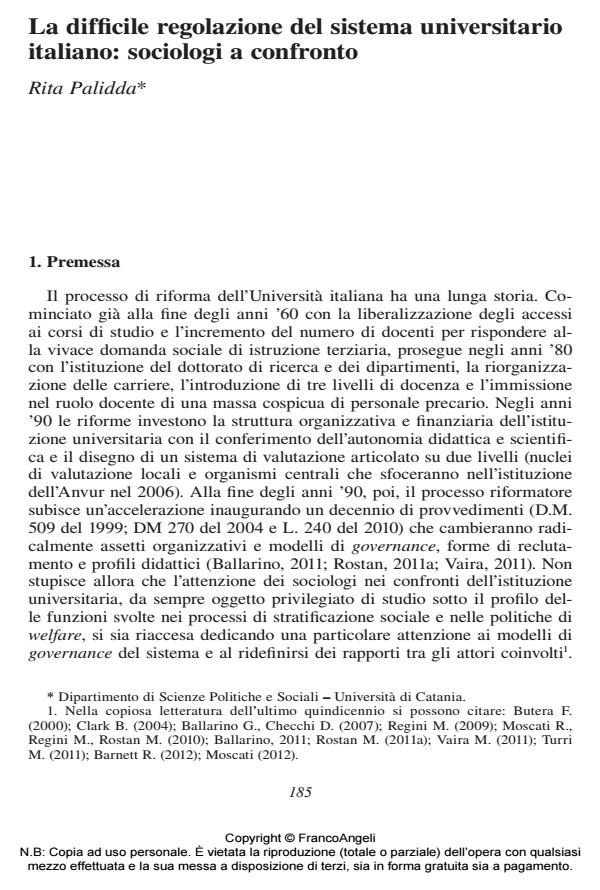The difficulty of university regulation: some sociological consideration about the reform
Journal title SOCIOLOGIA DEL LAVORO
Author/s Rita Palidda
Publishing Year 2014 Issue 2014/135
Language Italian Pages 15 P. 185-199 File size 106 KB
DOI 10.3280/SL2014-135011
DOI is like a bar code for intellectual property: to have more infomation
click here
Below, you can see the article first page
If you want to buy this article in PDF format, you can do it, following the instructions to buy download credits

FrancoAngeli is member of Publishers International Linking Association, Inc (PILA), a not-for-profit association which run the CrossRef service enabling links to and from online scholarly content.
The article analyzes the issues and the effects of university reform debated during the last AIS ELO conference "The failures of regulation". In recent years, the attention of sociologists has shifted from the traditional topic of social stratification and welfare policy to the different models of university governance and the redefinition of its institutional relationships. The reforms of 2000s changed radically the structures of University, its governance system, the recruitment and training path, but the effects of that still remain uncertain and ambivalent. The option of most European universities for a strong control, a reduction of autonomy, the establishment of common standards for recruitment and evaluation, increasing programming obligations, accountability and transparency have met, not only in Italy, strong resistance and not even enthusiastic reception by economic actors. Only the process of implementation of the reform will determine long-term effects on preferences and interactions of all the actors involved.
Keywords: University reform, governance, evaluation, shareholders, stakeholders
- Internship and employability of graduates in a "glocal" context Davide Arcidiacono, in SOCIOLOGIA DEL LAVORO 137/2015 pp.58
DOI: 10.3280/SL2015-137004 - Il Public Engagement delle università italiane nella VQR 2015-19. Uno studio dei casi Letizia Carrera, Ida Castelnuovo, Gabriela Maria Chiara Cavaglià, Stefania Chimenti, Andrea De Bortoli, Emanuela Pascuzzi, Stefano Piazza, Marina Sardi, in RIV Rassegna Italiana di Valutazione 92/2025 pp.123
DOI: 10.3280/RIV2025-092007
Rita Palidda, La difficile regolazione del sistema universitario italiano: sociologi a confronto in "SOCIOLOGIA DEL LAVORO " 135/2014, pp 185-199, DOI: 10.3280/SL2014-135011